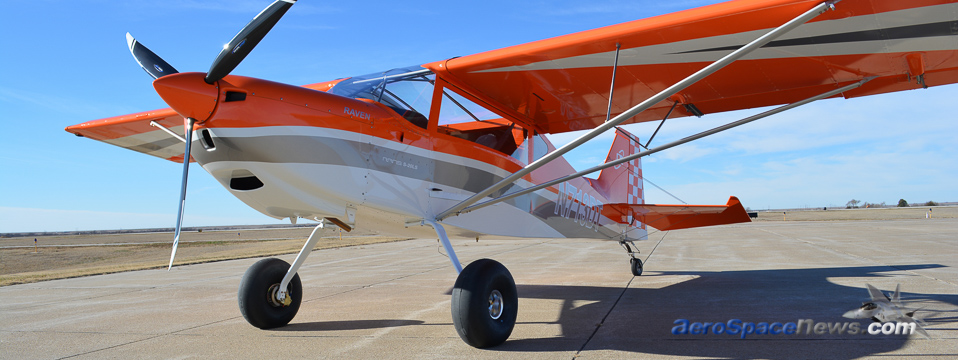RANS S-20LS Raven Now FAA Certified Factory Built SLSA
RANS Designs says their RANS S-20LS Raven has earned a special airworthiness certificate in the light-sport category (SLSA) from the US Federal Aviation Administration (FAA) and that the company will now offer a factory built version along with the previously available kit edition available in the experimental category.
A STOL (Short Take Off and Landing) airplane available both as a tailwheel (conventional gear) aircraft, as well as in a tricycle gear configuration, the S-20LS Raven seats two, has a 30' 3" wingspan, a useful load of 580 pounds, range of 582 miles, and a take off roll of just 300 feet, according to RANS Designs.
These specifications are based on a Rotax 912ULS powerplant producing 100 hp and burning 5 gph at 75% power. Other power options include 912iS, 914, and 915 (when available says the factory) from Rotax, the Lycoming 0-233, and Titan 0-340.
The plane will cruise at 112 mph for 5.2 hours, land in 340 feet, stall clean at 39 mph and 33 mph with flaps out. Fuel capacity is 26 gallons.
Cost of a factory built RANS S-20LS Raven starts at $119,000.00

RANS S-20LS Raven FAA Certified Factory Built SLSA: RANS Designs will now supply the FAA certified Raven SLSA (or S-LSA), factory-built and ready to fly, with engines from 80 to 180hp. The S-20LS Raven is priced at $119,000 before options and upgrades. Photo Courtesy RANS Designs
What is a SLSA?
Special Category Light-Sport Aircraft (SLSA)
A special airworthiness certificate in the light-sport category is issued to an aircraft that meets the definition of light-sport aircraft (LSA), is manufactured to the applicable consensus standards, and is one of the following five classes of the LSA category: airplanes, gliders, powered parachutes, weight-shift-control aircraft (commonly called trikes), and lighter-than-air aircraft (balloons and airships). When the aircraft meets all the eligibility requirements of Title 14 Code of Federal Regulations (14 CFR) §§ 1.1 and 21.190, it may be issued an airworthiness certificate in the LSA category.
Important Note – Transition Training
It is vital to receive proper training when transitioning into any aircraft. This is especially important for pilots with significant experience in legacy 14 CFR Part 23 certified aircraft transitioning to an LSA in the airplane class. LSAs can be and are very safe given the proper training, but are often lighter in weight and more responsive to control inputs than the aircraft most experienced pilots are used to in the legacy fleet. LSA can also feature unfamiliar engines and avionics. Training is necessary to learn the specifics of any design. For more information on transition training see Advisory Circular (AC) 90-109, "Airmen Transition to Experimental or Unfamiliar Airplanes."
Source: FAA
Don't forget to subscribe to our YouTube channel!

 Welcome to AeroSpaceNews.com, the world's first
Welcome to AeroSpaceNews.com, the world's first